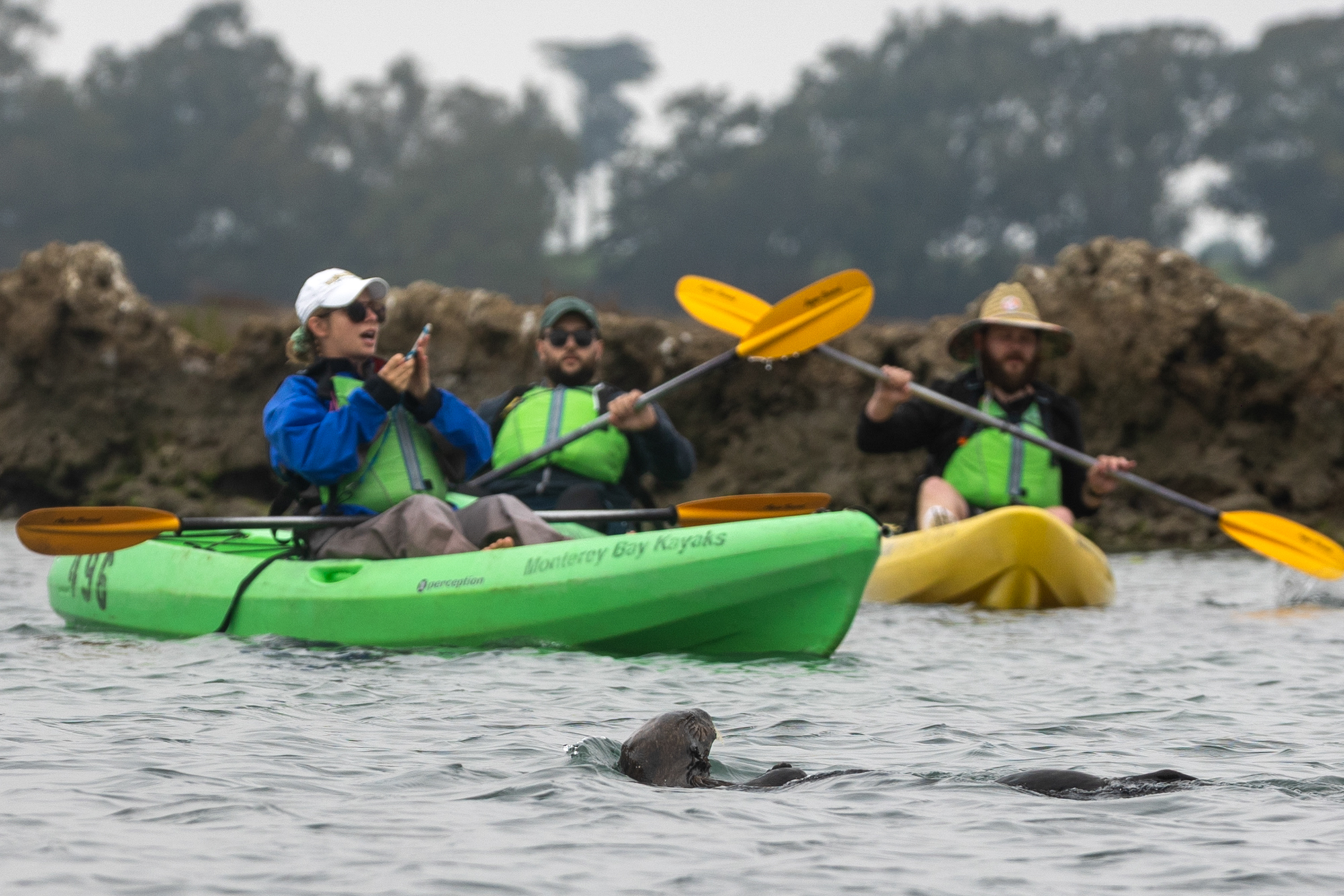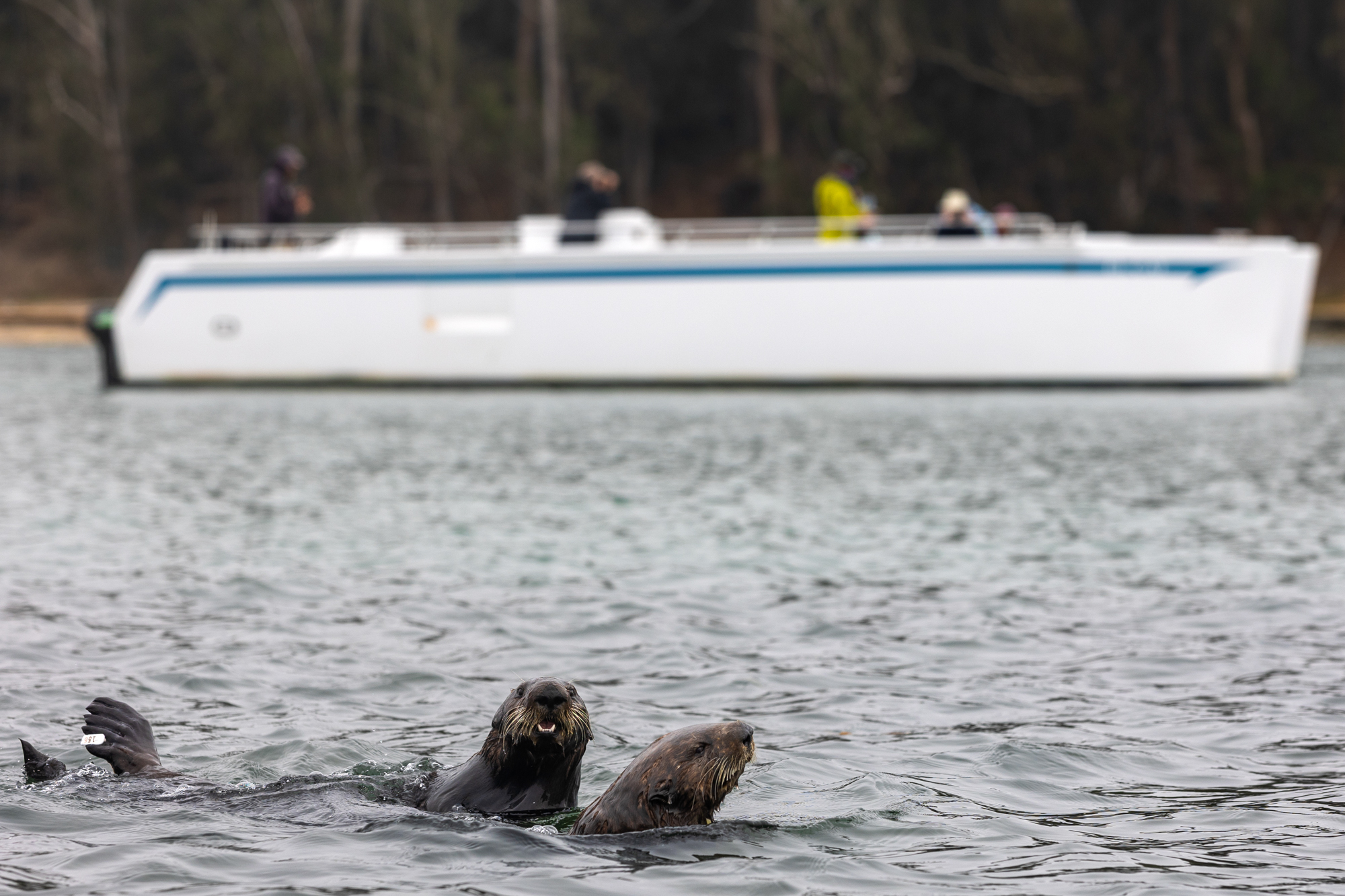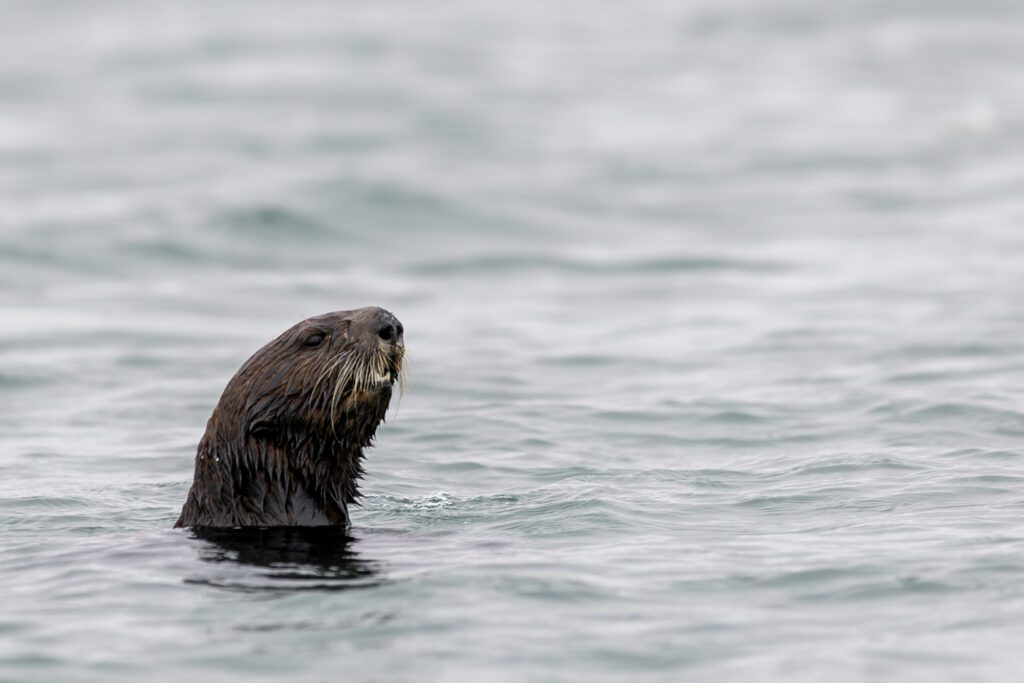What this would mean for Elkhorn Slough, the only estuary along the West Coast where sea otters have significantly colonized, won’t be known until after the final rule is released.
However, wildlife advocates and scientists argue that protecting species and their environments go hand in hand. While the sea otters have helped stabilize marshland and promote eelgrass growth, ultimately mitigating some of the worst effects of human-caused climate change.
Meanwhile, April Ridlon, director of science for the U.S. Ocean Conservation Program at the Monterey Bay Aquarium, said otters rely on the living ecosystem for their survival.
“If they don’t have anything to eat, we can pick up, feed and nurture otters, and release them as much as we want, but if the ecosystems they’re going back to are degraded they’re not going to fare well,” Ridlon said.
Federal wildlife officials published a proposal in the Federal Register that said they are “undertaking this change to adhere to the single, best meaning” of the Endangered Species Act. A federal spokesperson told KQED they would not “speculate” on how sea otters would be affected.
Hundreds of thousands of comments
Over 350,000 responses flooded in during the public comment period that ended in May. Of the thousands of comments from Californians, the majority opposed the rule change. Some groups labeled it an act of “insanity,” while others argued that maintaining the current definition is “vital protection for endangered species.”
More than a dozen museums, aquariums and wildlife groups sent a joint letter to the federal government strongly urging the withdrawal of the proposed rule. They note that “habitat destruction is the greatest driver of species extinction” and removing harm from the definition “runs contrary to the intent of the” act.

Comments from supporters argued, on the other hand, that scaling back enforcement would address a “longstanding obstacle that has blocked countless necessary projects.”
At least 40 supporters — including major farm organizations and water agencies — wrote a letter arguing regulators’ interpretation of the act is too broad and has resulted in the slowing, halting, or blocking of “activities that are critical to sustain the economic livelihoods of private landowners, farmers, ranchers, water users,” and rural communities. They wrote that projects are often tied up in expensive lawsuits, excessive permitting, even in areas where endangered species may no longer live.
Ian Lyle, director of federal relations for the Association of California Water Agencies, argues the change would pave the way for developing water infrastructure — everything from desalination to new storage to water recycling — in a way that “balances the needs of species with the needs of California and communities in the face of climate resilience needs.”
Kari Fisher, senior director and counsel of the California Farm Bureau Federation, which represents hundreds of farmers, told KQED that farmers care about wildlife, and if there’s a concern about a species, that would still be addressed. But said the change could pave the way for growers and species to coexist, “as well as economic prosperity for farmers and ranchers.”
‘The poster child for top predators’
Fur traders hunted sea otters almost to extinction during the 18th and 19th centuries, and in California, their numbers dwindled to around 50.
Today, there are more than 3,000 sea otters in California, and they’re “all descendants of those incredible tough survivors that managed to evade the fur trade,” Bentall said.

The resurgence of the furry animals is a testament to the restoration efforts of wildlife officials, environmental protections, and organizations like the Monterey Bay Aquarium, which rehabilitate sea otters and release them into Elkhorn Slough and other conservation areas.
Sea otters still face risks, such as white sharks that bite and kill them, mistaking them for seals. Bentall said the prevalence of sharks along the California coast is one reason the species has had trouble extending its home range.
The other issue is the loss of around 95% of Northern California’s kelp forests, where sea otters historically found refuge and foraged for crabs, abalone, snails and other food. Human-caused climate change, warming the Pacific Ocean, has led to urchin outbreaks and declining sea star populations.

